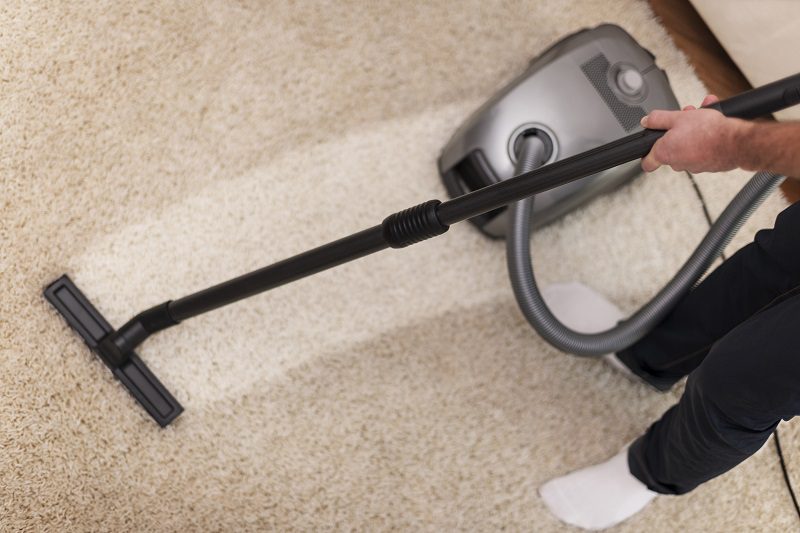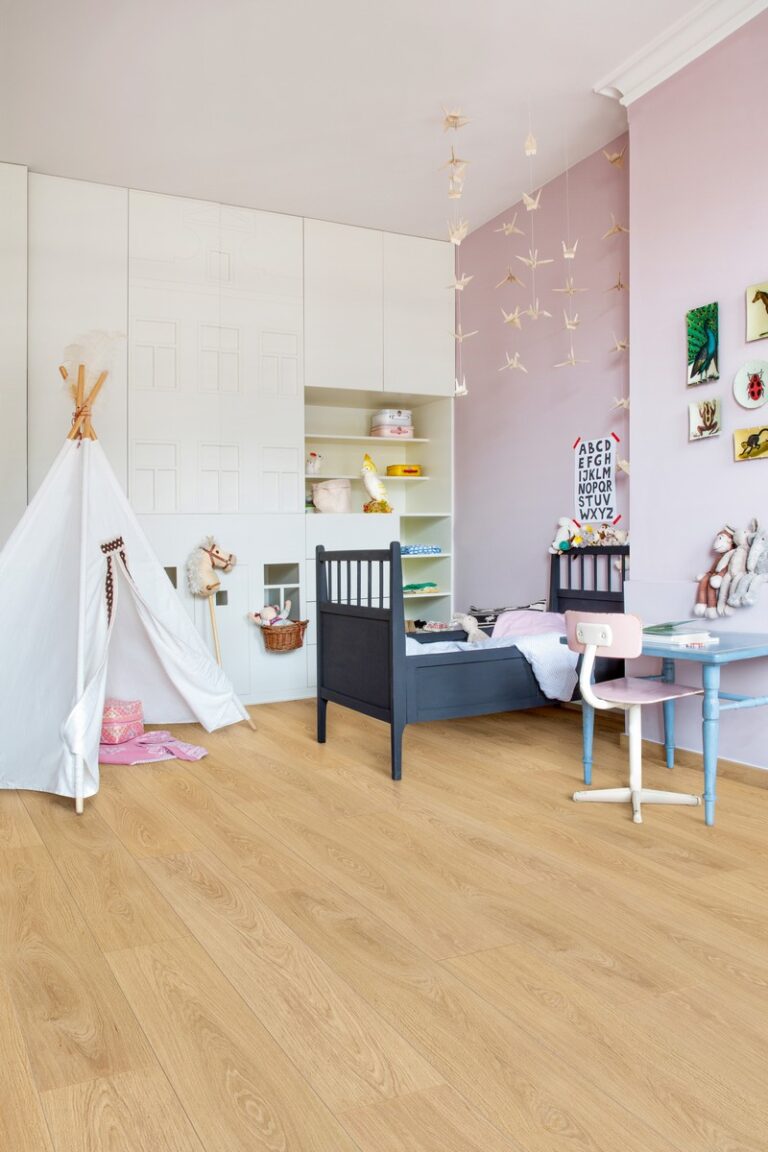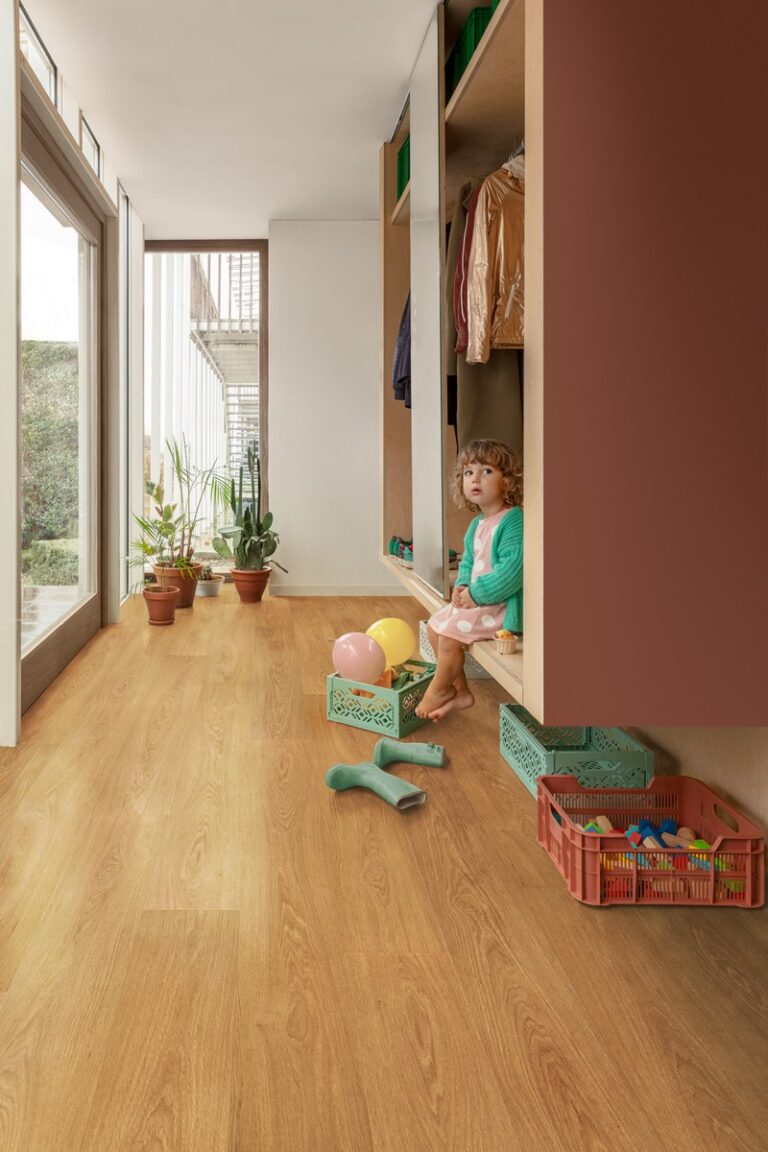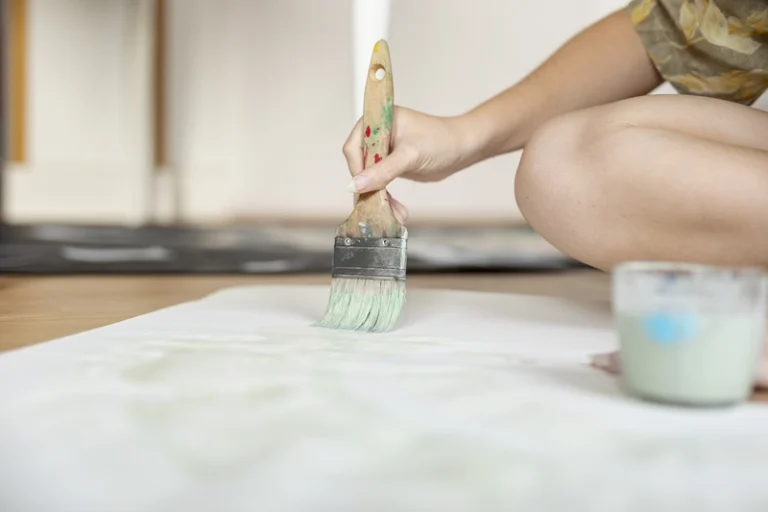Carpet mould is a common household issue that can pose serious health risks if not dealt with properly. No wonder many people want to know how to clean carpet mould effectively.
So, can mouldy carpets be saved? Exactly, this article covers everything you need to know about identifying the causes and health risks of mould, learning how to clean carpet mould, prevent it, and keep your carpets safe and your home healthy. Discover why it’s important to address carpet mould, how to tackle it effectively, and simple steps to prevent it from recurring.
What Is Carpet Mould?
Carpet mould, a common household issue, refers to fungal growth on carpets due to moisture and poor ventilation.
When carpets are exposed to dampness or high humidity, they create a perfect environment for mould spores to thrive and multiply. The lack of sunlight in areas covered by carpets further adds to the favourable conditions for mould growth. Factors such as water leaks, spills, or flooding can also accelerate the development of mould on carpets.
Inadequate air circulation and ventilation in a room can prolong the drying process of damp carpets, creating an ideal breeding ground for carpet mould. Pet dander, dust, and other organic debris trapped in carpets can provide nutrients for mould to feed on, further aggravating the problem.
Why Is it Important to Clean Carpet Mould?
Cleaning carpet mould is crucial as it not only preserves the carpet but also prevents potential health risks associated with mould exposure. When mould spores are present in carpets, they can easily become airborne when disturbed, leading to respiratory issues for those exposed. Removing mould not only improves indoor air quality but also eliminates unpleasant odours.
Regular maintenance of carpets prevents mould growth by reducing moisture levels and enhancing overall cleanliness in living spaces.
Causes of Carpet Mould
Carpet mould can be caused by various factors including moisture, humidity, poor ventilation, water damage, and leaky pipes.
When there’s excess moisture in the air, whether from spills or high humidity levels, it creates the perfect breeding ground for mould to thrive within the carpet fibres.
Poor ventilation exacerbates this issue by trapping moisture and preventing proper airflow, allowing mould spores to settle and grow. Similarly, instances of water damage – whether from flooding, leaks, or moisture intrusion – provide the ideal conditions for mould to propagate, especially in materials like carpets that absorb and retain moisture.
Additionally, leaky pipes can introduce hidden sources of water, leading to unseen mould growth beneath the carpet surface.
a. Moisture and Humidity
Excessive moisture and high humidity levels create ideal conditions for carpet mould to thrive, posing risks to both the carpet’s integrity and indoor air quality.
When moisture seeps into the carpet fibres, it provides a nourishing environment for mould spores to grow and spread swiftly. The combination of warmth and humidity accelerates the mould’s development, often unnoticed until it becomes a visible and musty issue.
Controlling indoor moisture levels is crucial to preventing this mould infestation; utilising dehumidifiers and ensuring proper ventilation are effective measures. Promptly addressing any water leaks or spills on carpets can significantly reduce the risk of mould formation, promoting a healthier indoor environment overall.
b. Poor Ventilation
Inadequate ventilation can trap moisture and pollutants, creating a conducive environment for carpet mould to proliferate and compromise indoor air quality.
When there is poor ventilation in a space, stagnant air prevents the escape of moisture from various sources like cooking, showering, or even simple breathing. This trapped moisture, combined with pollutants in the air, settles onto surfaces like carpets, providing an ideal breeding ground for carpet mould. Without proper airflow to remove this moisture build-up, mould spores find the perfect conditions to grow and spread, posing health risks and causing damage to the property. By ensuring adequate ventilation and airflow, the risk of mould infestation can be significantly reduced.
c. Water Damage
Can wet carpet cause mould? Water damage, if left unaddressed, can seep into carpets, creating a breeding ground for mould and compromising the structural integrity of the flooring.
When water infiltrates carpets, it not only provides the ideal damp environment for mould spores to proliferate but also weakens the carpet fibres, leading to potential degradation.
Immediate action is crucial to prevent this process from unfolding, as mould infestation can rapidly spread throughout the carpet padding and subfloor, making remediation more complex and costly. Mould growth poses serious health risks, aggravating allergies and respiratory issues.
d. Leaky Pipes
Leaky pipes can introduce water into the carpet padding and subfloor, facilitating mould growth and structural damage if not repaired promptly.
When water seeps into the carpet fibres due to leaky pipes, it gets absorbed by the padding and begins to spread underneath, creating an ideal environment for mould spores to thrive. The moist conditions can lead to a musty smell permeating the room, indicating the presence of mould.
Addressing plumbing leaks promptly is crucial to prevent further water intrusion and potential mould development, safeguarding the health of your household and preserving the integrity of your home. Mould remediation can be costly and disruptive, making prevention through timely repairs a prudent choice.
How to Identify Carpet Mould
Identifying carpet mould involves looking for visible signs like discolouration, or a musty odour, or using tools like HEPA filters to detect mould spores in the air.
Visual cues play a crucial role in spotting carpet mould, with patches of dark green or black indicating mould growth.
- One of the key indicators is the mouldy odour, often described as musty or earthy, emanating from the affected area.
- Utilising devices such as HEPA filters aids in air quality testing, pinpointing elevated levels of mould spores circulating in the indoor environment.
Regularly inspecting and cleaning carpets can help prevent mould infestation, ensuring a healthier home environment for everyone.
Health Risks of Carpet Mould
Exposure to carpet mould can lead to allergic reactions, respiratory problems, and skin irritations, posing risks to the occupants’ health and well-being.
These health risks associated with carpet mould exposure are particularly concerning for individuals with pre-existing respiratory conditions, such as asthma, as mould spores can exacerbate their symptoms and lead to severe breathing difficulties. Prolonged exposure to mould in carpets can trigger skin irritations, such as rashes or hives, especially in those with sensitive skin.
Allergic reactions to mould can manifest as sneezing, coughing, watery eyes, and even asthma attacks, making it vital to address any signs of mould growth promptly to prevent these health issues from worsening.
a. Allergic Reactions
Carpet mould exposure can trigger allergic reactions in individuals sensitive to mould spores, leading to symptoms like sneezing, coughing, and skin rashes.
These symptoms can range from mild to severe, depending on the individual’s sensitivity.
Allergic reactions to carpet mould can also manifest as watery eyes, nasal congestion, and respiratory issues, making it challenging for those affected to breathe easily. It is crucial for people prone to allergies to address mould growth promptly, as prolonged exposure can worsen symptoms and lead to long-term health complications. Remediation measures, such as thorough cleaning and professional mould removal, are necessary to create a safe environment free of mould spores.
b. Respiratory Issues
Carpet mould can exacerbate respiratory issues such as asthma or bronchitis, leading to breathing difficulties and potential health complications.
Individuals with pre-existing conditions like asthma are particularly vulnerable to the effects of carpet mould exposure, as the spores can trigger asthma attacks and worsen symptoms.
Mould exposure can lead to chronic respiratory conditions, such as chronic obstructive pulmonary disease (COPD), making it crucial to address any mould growth promptly to prevent these serious health consequences.
c. Skin Irritations
Contact with carpet mould can cause skin irritations such as itching, redness, or dermatitis, necessitating prompt mould remediation to prevent further skin issues.
Exposure to mould spores released by contaminated carpets can trigger allergic reactions in sensitive individuals, leading to persistent skin discomfort. Common symptoms of skin irritations from carpet mould exposure may also include rashes or hives, which can be exacerbated in those with existing skin conditions.
Ignoring the presence of carpet mould not only harms the structural integrity of your home but also poses significant risks to your skin health. It is crucial to address mould contamination promptly to safeguard your skin and overall well-being.
How to Clean Carpet Mould
Cleaning carpet mould involves wearing protective gear, using a mould removal solution, scrubbing the affected area, and ensuring thorough drying to prevent mould recurrence.
Before starting the cleaning process, it’s crucial to ventilate the area by opening windows and using fans to facilitate air circulation. Next, carefully inspect the carpet for any visible mould growth and remove any excess moisture using a wet vacuum or towels.
- Once the initial steps are completed, prepare a cleaning solution by mixing water and a mould removal solution approved for carpet use.
- Proceed to scrub the affected area gently, ensuring you cover all mould-infected spots thoroughly.
After scrubbing, use a HEPA vacuum to clean up any remaining spores or debris. This high-efficiency particulate air vacuum is essential for capturing small particles that regular vacuums might miss, aiding in complete clean carpet mould removal.
a. Wear Protective Gear
Before cleaning carpet mould, ensure to wear protective gear such as gloves, masks, and goggles to prevent direct contact with mould spores and contaminants.
Protective gear plays a crucial role in safeguarding your health when dealing with carpet mould. Gloves shield your hands from direct exposure while masks offer respiratory protection against inhaling harmful particles. Goggles protect your eyes from irritation and potential harm caused by mould spores. By wearing this equipment, you create a barrier between yourself and the mould, reducing the risk of health complications. Always remember to properly dispose of the protective gear after cleaning to avoid spreading any remaining mould spores.
b. Vacuum the Affected Area
After wearing protective gear, vacuum the affected carpet area with a HEPA vacuum cleaner to remove loose mould spores and debris.
Vacuuming is a crucial step in the process of carpet mould cleaning as it helps in the physical removal of visible mould particles and spores that have settled in the fibres. The use of a HEPA vacuum cleaner is particularly significant since it has specialised filters designed to capture even the smallest particles, including mould spores, to prevent their spread during the cleaning process. By effectively trapping these harmful particles, HEPA vacuums play a vital role in containing and reducing the risk of mould contamination, thus contributing to a healthier indoor environment.
c. Use a Mould Removal Solution
Apply a mould removal solution recommended for carpets to effectively eliminate mould growth and inhibit the spread of mould spores.
When dealing with carpet mould, it is essential to choose a product specially formulated for carpets as they require a different level of care compared to hard surfaces. A common effective method is using a carpet cleaner with a mould-fighting ingredient, ensuring thorough coverage of the affected area.
To further diminish the chances of recontamination, it is crucial to address the source of moisture that initially caused the mould growth. By fixing any leaks or improving ventilation, you can create an environment less conducive to mould development.
Regularly cleaning and maintaining your carpets can also prevent mould from establishing colonies, providing a clean and healthy living space for you and your family.
d. Scrub the Area
Scrub the affected carpet area thoroughly using a brush or sponge with the mould removal solution to dislodge mould growth and clean the fibres.
Ensure that you work the solution into the carpet fibres deeply to reach any underlying mould spores, as surface cleaning may not be sufficient to eliminate all traces of mould.
- Carefully scrub in a circular motion, paying special attention to any heavily affected areas with visible mould patches.
- Be patient and thorough in this process to effectively address and clean carpet mould, leaving no room for potential regrowth.
After scrubbing, allow the carpet to dry completely and then vacuum to remove any remaining debris.
e. Dry the Carpet Thoroughly
After cleaning, ensure proper drying of the carpet using fans or dehumidifiers to prevent moisture retention and mould reinfestation.
Allowing the carpet to completely dry is crucial in maintaining a healthy indoor environment. When carpets remain damp, they become a breeding ground for mould and mildew, which can pose serious health risks. Utilising fans and dehumidifiers aids in efficient moisture removal, reducing the likelihood of mould recurrence. Proper ventilation also plays a key role in speeding up the drying process. Remember, a dry carpet is not only visually appealing but also ensures the longevity of your flooring and the cleanliness of your space.
If you need assistance with carpet cleaning, simply utilise the Carpet Cleaning service from TEKA Cleaning. Don’t compromise on the cleanliness and health of your carpets. Invest in professional carpet cleaning services from TEKA Cleaning and enjoy a cleaner, healthier, and more visually appealing living or working environment.
How to Prevent Carpet Mould
Preventing carpet mould entails keeping the carpet dry, using a dehumidifier, improving ventilation, and promptly fixing any leaks or water damage in the surroundings.
Ensuring proper air circulation is key to preventing moisture build-up, which can trigger mould growth in carpets. By improving ventilation through open windows, ceiling fans, or HVAC systems, you can help reduce excess humidity levels that contribute to mould formation. In addition, promptly addressing any water damage incidents, such as spills or leaks, can prevent the development of mould colonies by avoiding prolonged exposure of carpets to moisture.
a. Keep the Carpet Dry
To prevent carpet mould, ensure the carpet remains dry by promptly addressing spills, leaks, and moisture sources, which can create a breeding ground for mould growth.
One key tip is to use a dehumidifier in areas with high humidity levels, as excessive moisture in the air can lead to damp carpets. Investing in a good quality moisture barrier pad can help prevent liquids from seeping through the carpet and reaching the floor underneath. It’s also essential to quickly clean up any spills or leaks to prevent them from penetrating deep into the carpet fibres. Regularly vacuuming and airing out the carpet can also aid in keeping it dry and mould-free.
b. Use a Dehumidifier
Employ a dehumidifier in areas with high humidity levels to regulate moisture and prevent excess dampness that can lead to carpet mould growth.
Dehumidifiers play a crucial role in creating an environment that is unfavourable for mould growth by reducing the humidity levels. By extracting moisture from the air, these devices help in maintaining optimal moisture conditions, preventing the accumulation of excess water that can seep into carpets and promote mould development.
c. Improve Ventilation
Enhancing ventilation by opening windows or using fans can promote air circulation and prevent moisture build-up, reducing the risk of carpet mould formation.
Good ventilation plays a crucial role in maintaining indoor air quality and preventing the growth of mould, especially in areas with high humidity levels. Proper airflow helps in drying out any accumulated moisture in carpets, which is a common breeding ground for mould spores. Plus natural methods like opening windows, and utilising extractor fans in bathrooms and kitchens can also assist in expelling humid air. Installing a whole-house ventilation system can provide a consistent flow of fresh air throughout the home, further reducing the chances of mould development. Improving ventilation not only enhances comfort but also safeguards your health by minimising mould-related allergens.
d. Fix Any Leaks or Water Damage
Addressing and repairing leaks or water damage promptly is essential to prevent water infiltration into carpets, mitigating the risk of mould formation.
Focusing on timely repairs for leaks and water damage can make a significant difference in preserving the integrity of your carpets. Left unchecked, moisture seeping into carpets not only compromises their appearance but also creates an environment ripe for mould growth.
By taking immediate action to fix leaks and address water damage, you are not only protecting the aesthetic appeal of your carpets but also safeguarding the health of your indoor environment. The longer water lingers in the carpet fibres, the higher the chances of mould spores finding a conducive environment to thrive.
That’s the lowdown on how to clean carpet mould that’s worth knowing. Essentially, warding off mould growth boils down to keeping the carpet spick and span and ensuring it stays dry, along with giving it a regular clean.
Furthermore, it’s crucial to be discerning in your carpet selection. Opt for top-notch carpets that are built to last, yet don’t compromise on style, like those from Abingdon, Cormar Carpet, or Victoria Carpet by TEKA Flooring.
Our carpets are made with high-quality materials, so you can be sure they’ll last for years to come. We also offer professional carpet fitting services to make the process easy and convenient for you.
Read Also:














